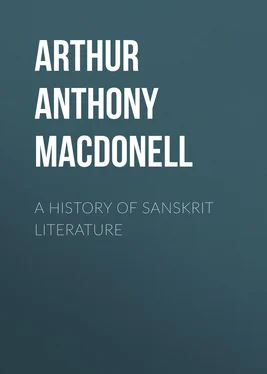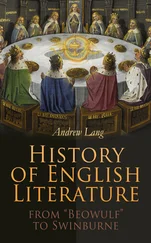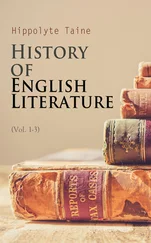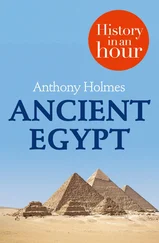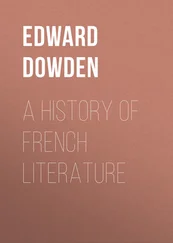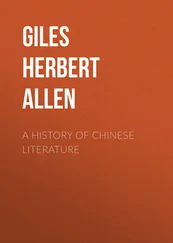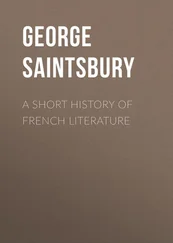Arthur Anthony MacDonell - A History of Sanskrit Literature
Здесь есть возможность читать онлайн «Arthur Anthony MacDonell - A History of Sanskrit Literature» — ознакомительный отрывок электронной книги совершенно бесплатно, а после прочтения отрывка купить полную версию. В некоторых случаях можно слушать аудио, скачать через торрент в формате fb2 и присутствует краткое содержание. Жанр: foreign_prose, foreign_antique, на английском языке. Описание произведения, (предисловие) а так же отзывы посетителей доступны на портале библиотеки ЛибКат.
- Название:A History of Sanskrit Literature
- Автор:
- Жанр:
- Год:неизвестен
- ISBN:нет данных
- Рейтинг книги:5 / 5. Голосов: 1
-
Избранное:Добавить в избранное
- Отзывы:
-
Ваша оценка:
- 100
- 1
- 2
- 3
- 4
- 5
A History of Sanskrit Literature: краткое содержание, описание и аннотация
Предлагаем к чтению аннотацию, описание, краткое содержание или предисловие (зависит от того, что написал сам автор книги «A History of Sanskrit Literature»). Если вы не нашли необходимую информацию о книге — напишите в комментариях, мы постараемся отыскать её.
A History of Sanskrit Literature — читать онлайн ознакомительный отрывок
Ниже представлен текст книги, разбитый по страницам. Система сохранения места последней прочитанной страницы, позволяет с удобством читать онлайн бесплатно книгу «A History of Sanskrit Literature», без необходимости каждый раз заново искать на чём Вы остановились. Поставьте закладку, и сможете в любой момент перейти на страницу, на которой закончили чтение.
Интервал:
Закладка:
The remark which has often been made that monotony prevails in the Vedic hymns contains truth. But the impression is produced by the hymns to the same deity being commonly grouped together in each book. A similar effect would probably arise from reading in succession twenty or thirty lyrics on Spring, even in an anthology of the best modern poetry. When we consider that nearly five hundred hymns of the Rigveda are addressed to two deities alone, it is surprising that so many variations of the same theme should be possible.
The hymns of the Rigveda being mainly invocations of the gods, their contents are largely mythological. Special interest attaches to this mythology, because it represents an earlier stage of thought than is to be found in any other literature. It is sufficiently primitive to enable us to see clearly the process of personification by which natural phenomena developed into gods. Never observing, in his ordinary life, action or movement not caused by an acting or moving person, the Vedic Indian, like man in a much less advanced state, still refers such occurrences in Nature to personal agents, which to him are inherent in the phenomena. He still looks out upon the workings of Nature with childlike astonishment. One poet asks why the sun does not fall from the sky; another wonders where the stars go by day; while a third marvels that the waters of all rivers constantly flowing into it never fill the ocean. The unvarying regularity of sun and moon, and the unfailing recurrence of the dawn, however, suggested to these ancient singers the idea of the unchanging order that prevails in Nature. The notion of this general law, recognised under the name ṛita (properly the “course” of things), we find in the Rigveda extended first to the fixed rules of the sacrifice (rite), and then to those of morality (right). Though the mythological phase presented by the Rigveda is comparatively primitive, it yet contains many conceptions inherited from previous ages. The parallels of the Avesta show that several of the Vedic deities go back to the time when the ancestors of Persians and Indians were still one people. Among these may be mentioned Yama, god of the dead, identical with Yima, ruler of paradise, and especially Mitra, the cult of whose Persian counterpart, Mithra, obtained from 200–400 A.D. a world-wide diffusion in the Roman Empire, and came nearer to monotheism than the cult of any other god in paganism.
Various religious practices can also be traced back to that early age, such as the worship of fire and the cult of the plant Soma (the Avestan Haoma ). The veneration of the cow, too, dates from that time. A religious hymn poetry must have existed even then, for stanzas of four eleven-syllable (the Vedic trishṭubh ) and of four or three eight-syllable lines ( anushṭubh and gāyatrī ) were already known, as is proved by the agreement of the Avesta with the Rigveda .
From the still earlier Indo-European period had come down the general conception of “god” ( deva-s , Lat. deu-s ) and that of heaven as a divine father ( Dyauṣ pitā , Gr. Zeus patēr , Lat. Jūpiter ). Probably from an even remoter antiquity is derived the notion of heaven and earth as primeval and universal parents, as well as many magical beliefs.
The universe appeared to the poets of the Rigveda to be divided into the three domains of earth, air, and heaven, a division perhaps also known to the early Greeks. This is the favourite triad of the Rigveda , constantly mentioned expressly or by implication. The solar phenomena are referred to heaven, while those of lightning, rain, and wind belong to the air. In the three worlds the various gods perform their actions, though they are supposed to dwell only in the third, the home of light. The air is often called a sea, as the abode of the celestial waters, while the great rainless clouds are conceived sometimes as rocks or mountains, sometimes as the castles of demons who war against the gods. The thundering rain-clouds become lowing cows, whose milk is shed and bestows fatness upon the earth.
The higher gods of the Rigveda are almost entirely personifications of natural phenomena, such as Sun, Dawn, Fire, Wind. Excepting a few deities surviving from an older period, the gods are, for the most part, more or less clearly connected with their physical foundation. The personifications being therefore but slightly developed, lack definiteness of outline and individuality of character. Moreover, the phenomena themselves which are behind the personifications have few distinctive traits, while they share some attributes with other phenomena belonging to the same domain. Thus Dawn, Sun, Fire have the common features of being luminous, dispelling darkness, appearing in the morning. Hence the character of each god is made up of only a few essential qualities combined with many others which are common to all the gods, such as brilliance, power, beneficence, and wisdom. These common attributes tend to obscure those which are distinctive, because in hymns of prayer and praise the former naturally assume special importance. Again, gods belonging to different departments of nature, but having striking features in common, are apt to grow more like each other. Assimilation of this kind is encouraged by a peculiar practice of the Vedic poets—the invocation of deities in pairs. Such combinations result in attributes peculiar to the one god attaching themselves to the other, even when the latter appears alone. Thus when the Fire-god, invoked by himself, is called a slayer of the demon Vṛitra, he receives an attribute distinctive of the thunder-god Indra, with whom he is often coupled. The possibility of assigning nearly every power to every god rendered the identification of one deity with another an easy matter. Such identifications are frequent enough in the Rigveda . For example, a poet addressing the fire-god exclaims: “Thou at thy birth, O Agni, art Varuṇa; when kindled thou becomest Mitra; in thee, O Son of Might, all gods are centred; thou art Indra to the worshipper” (v. 3, 1).
Moreover, mystical speculations on the nature of Agni, so important a god in the eyes of a priesthood devoted to a fire-cult, on his many manifestations as individual fires on earth, and on his other aspects as atmospheric fire in lightning and as celestial fire in the sun—aspects which the Vedic poets are fond of alluding to in riddles—would suggest the idea that various deities are but different forms of a single divine being. This idea is found in more than one passage of the later hymns of the Rigveda . Thus the composer of a recent hymn (164) of the first book says: “The one being priests speak of in many ways; they call it Agni, Yama, Mātariçvan.” Similarly, a seer of the last book (x. 114) remarks: “Priests and poets with words make into many the bird ( i.e. the sun) which is but one.” Utterances like these show that by the end of the Rigvedic period the polytheism of the Rishis had received a monotheistic tinge.
Occasionally we even find shadowed forth the pantheistic idea of a deity representing not only all the gods, but Nature as well. Thus the goddess Aditi is identified with all the deities, with men, with all that has been and shall be born, with air, and heaven (i. 89); and in a cosmogonic hymn (x. 121) the Creator is not only described as the one god above all gods, but is said 3 3 In verse 10, which is a late addition; see p. 51, footnote.
to embrace all things. This germ of pantheism developed through the later Vedic literature till it assumed its final shape in the Vedānta philosophy, still the most popular system of the Hindus.
The practice of the poets, even in the older parts of the Rigveda , of invoking different gods as if each of them were paramount, gave rise to Professor Max Müller’s theory of Henotheism or Kathenotheism, according to which the seers held “the belief in individual gods alternately regarded as the highest,” and for the moment treated the god addressed as if he were an absolutely independent and supreme deity, alone present to the mind. In reality, however, the practice of the poets of the Rigveda hardly amounts to more than the exaggeration—to be found in the Homeric hymns also—with which a singer would naturally magnify the particular god whom he is invoking. For the Rishis well knew the exact position of each god in the Soma ritual, in which nearly every member of the pantheon found a place.
Читать дальшеИнтервал:
Закладка:
Похожие книги на «A History of Sanskrit Literature»
Представляем Вашему вниманию похожие книги на «A History of Sanskrit Literature» списком для выбора. Мы отобрали схожую по названию и смыслу литературу в надежде предоставить читателям больше вариантов отыскать новые, интересные, ещё непрочитанные произведения.
Обсуждение, отзывы о книге «A History of Sanskrit Literature» и просто собственные мнения читателей. Оставьте ваши комментарии, напишите, что Вы думаете о произведении, его смысле или главных героях. Укажите что конкретно понравилось, а что нет, и почему Вы так считаете.
